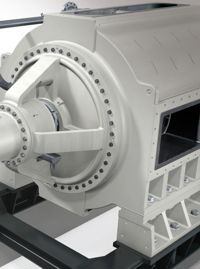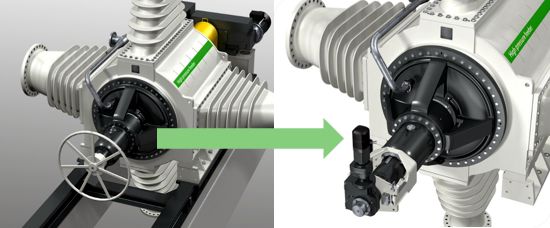Optimizing continuous digester performance (webinar)
Nov 17, 2020
Many continuous digesters in North America are operating over design, making the system more sensitive to disturbances in the process. A Valmet webinar reviewed some typical issues and a few select products and services offered by Valmet to improve the operation of continuous digester systems. At this webinar, attendees learned:
- Common issues with an overloaded system
- Valmet’s approach to improving digester operations through a Valmet Digester Audit
- Importance of digester chip level control and upgrades from Valmet to improve digester operation
- How to improve safety and operation of Low- and High-Pressure Feeders with a Valmet Feeder Adjustment Kit

Richard started off with an introduction and brief history of digesters. He continued by looking at common issues with overloaded digester systems and possible solutions, how a continuous digester audit works with respect to chip flow, sizing, specific load, retention time, screen loading and Valmet digester simulations. Finally, he covered the benefits of the Valmet Feeder Adjustment Kit and CL1000 chip level sensors.
At the end of the webinar there was a comprehensive Q&A session where Richard answered several questions the attendees had submitted. A sampling of these questions and their answers are presented below...
Can the digester audit be done remotely?

With the current COVID-19 state of the world, Valmet, like other companies, has worked to offer more services remotely. We have developed an audit package that can be done remotely, which can be complimented by an onsite visit later.
When performing an audit remotely, it must be understood that very clear and frequent communication is needed between the mill and Valmet. Understanding the current operating situation is key to identifying the system issues. The mill must have resources to dedicate to the audit - when doing the audit remotely, mill personnel will be responsible for more data gathering, so the mill resources must be considered.
Any case studies of using an Impbin retrofit to offload an undersized digester? Are screen upgrades also required typically?
The Valmet ImpBin is a solution for limitations of an overloaded system. An undersized chip bin, feed system, or removing the impregnation zone from the digester have been offered as solutions for an undersized digester. This is a great example of how a good understanding of the system will determine the best upgrade approach. Perhaps smaller upgrades are acceptable, or perhaps an ImpBin is more appropriate.
What are the benefits of running a submerge chip column vs not submerge?
Valmet’s opinion is there are none. The steam/liquor phase digester is designed for the chip level to be controlled above the liquor level in the digester. The chips above the liquor provide several tons of force to help move the chip column and submerging the chip column does away with this.
What have you found to be the optimum way to control the chip level in single and dual vessel hydraulic digesters?
Control of the digester chip level is typically done by blow flow adjustment. Remember that good level measurement is the key. Valmet CL1000 chip level sensors provide reliable measurements on hydraulic and steam/liquor phase digesters. For the S/L digesters, as I mentioned before, good chip level control above the liquor level is needed to maintain a consistent driving force on the chip column.
How do you adjust the feeder with the Valmet Feeder Adjustment Kit when there is a power failure?
The electric gear motor of the feeder adjustment kit replaces the handwheel and the locking pin on the High-Pressure Feeder (HPF). The gear motor has a brake to lock the motor and gearbox and prevent the movement of the rotor in/out of the housing.

The Valmet Feeder Adjustment Kit (right) replaces the handwheel adjuster (left) with an electric motor.
The motor has an extended shaft on the fan end, so in the event of a power failure, the brake on the gearmotor can be manually released and the gearmotor can be driven with a wrench or power drill. Once power is restored, the feeder position is reset and normal operation can resume.
Richard has been active in the pulp & paper industry since his graduation from Auburn with a BS in Chemical Engineering in 2002. He started with Domtar as a process engineer, and served in a succession of positions of growing responsibility including pulp technical assistant, woodyard superintendent and pulpmill maintenance superintendent. He joined Valmet in 2014 as a mill sales manager and is currently a senior product manager for digester aftermarket products and services in the fiber technology unit.
For more information about optimizing continuous digester performance,watch the webinar and contact your Valmet representative.
